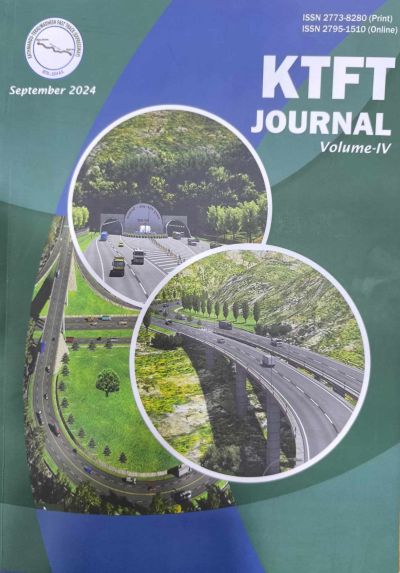Engineering Geological Complications of the Nepal Himalaya
DOI:
https://doi.org/10.3126/ktftj.v4i1.70172Keywords:
tectonic, topography, engineering, geological, sustainability, investigationAbstract
The earth’s crust has been folded and uplifted due to the tectonic movement resulting in the elevated surface which is known as Nepal Himalaya. Geologically Nepal is divided into Terai, Churia, lesser Himalaya, Higher Himalaya and Tibetan Tethys zone from south to north. Due to the difficult and heterogeneous geology and topography of Nepal Himalaya: it is always challenging to establish any kind of engineering project. Geology always impacts on any kind of engineering construction within the earth. It is high time skilled manpower from geological and engineering fields collaborated for the sustainability of the engineering project. Risk and cost can be effectively reduced along with increasing the life span of the project if the proper engineering geological study is done before the establishment of any kind of engineering project. The tremendous loss of economy and destruction of the infrastructure has occurred in the past in different places of the world due to the negligence of engineering geological features of the site. Hence, proper engineering geological investigation is crucial for establishing any kind of engineering project within time, with minimum effort and cost for a longer period of time. This paper is the compilation of numerous literature review along with different professional and academic visits for addressing engineering geological complications of Nepal Himalaya.




